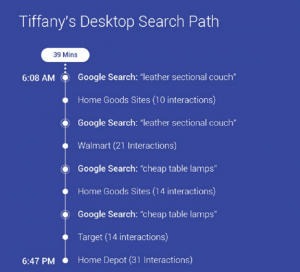Don’t let B2B internal disconnects limit customer relationships, affect revenue results and hamstring your GTM teams’ productivity.
The growing impact of B2B internal disconnects is limiting our customer relationships, affecting our revenue results and hamstringing our go-to-market (GTM) teams’ productivity. The longer these disconnects go unchecked, the more negative impact organizations experience — lost customer opportunities, squandered resources and a lack of ability to compete in a connected, digital-first world.
While there is a long list of gaps, we have identified three debilitating B2B “disconnects” to focus on.
Disconnect 1: Fragmented marketing, sales and customer tactics versus unified GTM strategies
GTM strategies miss the mark because of:
- Misalignment with markets and customers.
- Lack of executive ownership.
- A siloed, departmental approach.
This disconnect challenge is made more complicated when every organization, region, team or business unit is doing their own thing in how they go to market. While it is essential to tailor to each market (and customer), a core framework must be in place, driven by the executive team through and across all business functions.
Disconnect 2: Internal-focused sales and marketing process versus buyer-driven journeys
Yes, there is only one process we should focus on — the customer process. However, the reality is we are working hard to integrate — not just align — our sales and marketing strategies, approach and organization with the way our customers want to do business. Mastering the elusive buyer + account journey is the key to effective revenue and customer generation.
Disconnect 3: Siloed people, process, data and technology versus company-wide integration
We’re automating and spending more on tech than ever. The average enterprise has 270 different technology + data subscriptions. That’s complexity. With self-guided business buyer preferences, now is the time to take inventory, streamline our tech and infuse our people, process and technology with our GTM and customer journeys.
4 tips for addressing B2B disconnects
The three disconnects above are integral to driving revenue, creating deeper customer relationships and operating efficiently and profitably. These three business imperatives are intertwined, which is why we work on all three as a connected initiative. While this article is as much therapy and inspiration as practical advice, the data spells out the business costs when these disconnects are ignored.
- Lost productivity is estimated to cost U.S. businesses $ 1.8 trillion every single year due to disconnected teams, processes and data.
- Bad customer experiences cost U.S. businesses $ 75 billion a year.
- 55% of organizations work in silos, creating misalignment both internally and externally.
To get connected and make buyer connections, let’s dive in on where and how to address the three debilitating B2B disconnects.
1. Review, refresh and optimize your GTM strategy continuously
The first place to start is to evaluate your full GTM strategy, with a spotlight on how your target markets operate and your customers buy. Owned and led by CXOs, this always-on GTM work is not a marketing thing, a sales thing or a strategy team thing. Instead, develop dedicated, cross-functional teams to continuously collect and then operationalize customer intelligence into:
- The products you provide.
- The market segments you prioritize.
- The best channels to market.
Regularly address your GTM strategy components to become part of your culture and the way your teams work and think. Important questions to tackle include:
- What are the big market shifts, trends and drivers creating pain and/or opportunities for the customers you serve?
- What does your ideal customers’ business look like in the next 12-18 months and what role(s) can your solutions/company play?
- How we can better partner and co-create with our customers and partner ecosystem to generate more value for all parties?
- How do we simplify and articulate our company position, the value of our solutions and focus on the use cases we solve?
2. Acknowledge and address the disintermediation of B2B sellers in today’s buyer’s journey
We’ve been studying and seeing the decreasing productivity of B2B sales teams for the last decade. Why? B2B buyers want and expect control of their process and how they want to buy and do business.
Only 17% of the B2B buying process is spent with sales professionals today. Buyers have gone digital, sales have not. It’s clear that sellers (and company leaders) overvalue an in-person, high-touch customer experience and undervalue online experiences important to today’s buyers.
This is not a call to get rid of salespeople but to rethink the strategy, roles and needs. Let’s take an integrated approach incorporating all company functions.
To contribute to addressing the sales gap, marketing is trying to play a more active role. But marketing-driven customer generation doesn’t work if marketing is more noise and another silo in the buyers’ journey. Generating loads of content to serve as a honey trap to capture leads just to throw over the wall to sales is not the answer. Nor is simply switching to an account-based GTM strategy to sell and market to specific accounts. Too many times this account-based approach ends up being your sales teams’ wish list of customers and sales and marketing executed on your timing, not your customers.
What we are starting to see is a digital-human team, leveraging technology and data not just for automation, but for more intelligent engagement. To identify the optimal combination of human and self-serve options, roles are being redefined and cross-functional teams are being formed.
For example, infusing sales, marketing and customer success pros to capture and action what’s happening with customers across channels.
Another powerful ingredient is putting artificial intelligence (AI), tech and buyer and account intelligence to work to learn more about buyers while, at the same time, giving B2B buyers the control they expect. This unified effort empowers all parties to have more proactive and consultative conversations with their customers.
3. Assess every customer touchpoint to optimize buyer and customer experience and action
As part of a refreshed GTM strategy and an optimization of sales and marketing for digital buying, the next area of focus is to map your best opportunity accounts and buyer committee journeys.
The “journey” concept is thrown around so often that it has become cliché. Don’t let that hold you back from doing the work. Understanding and building for self-directed buyer and account journeys are the best path forward.
Commit to studying and dissecting — from a customer’s point of view — how your ideal customers and target accounts actually kick-start initiatives and make decisions on both solutions and vendors. Dissection starts with a deep dive to identify the full buying committee and capture committee members’ individual and collective needs, pains and opportunities. These needs will become the most significant focus of our GTM effort, not our products.
Once your journey-focused approach is underway, we can then use buyer and account intelligence, performance data and feedback loops to understand where to deploy human touch and where we can automate outreach and processes. In all cases, we are looking to infuse “humanness” into every communications touchpoint.
Empathy, understanding and emotional intelligence become the default over cold calls, spam emails and uninspiring product info. This empowers our teams to develop creative, engaging, multi-sensory communications that feed buyer and account journeys.
4. Obliterate organizational, tech, data and process silos by integrating with customer journeys
With the GTM set and customer journeys scoped, now we need to ensure our internal processes, team and data can inform and deliver what’s needed to create dynamic customer experiences with predictable results.
The most efficient approach is to have a centralized, cross-functional team to overlay the journey with systems, processes and data models to understand both the gaps and overlapping areas. We also need to understand the external buyer channels and resources we need to monitor and integrate with in order to draw insights and activate buyer and account engagement along our customers’ journeys.
To eliminate internal buyer, account and customer silos, here are the fundamentals to address:
- Cross-functional organization design and workflows to deliver GTM and customer journeys.
- Technology and tools to automate manual tasks, dazzle customers and provide insights.
- Data models and dashboards to get insights and intelligence into the hands of your teams.
Getting connected to make deeper customer connections
Business and revenue are not about sales-marketing alignment or about being aligned with our customers. Today, these noble efforts are not enough.
Rather, to compete in a digital-first world, our GTM, account and buyer journeys and enabling infrastructure strategy must be connected to win the hearts, minds and budgets of our most coveted customers.
If we do not address and tackle the big three disconnects head on, we are severely limiting our teams and our potential.
The post 4 ways to address B2B disconnects and drive customer relationships and revenue appeared first on MarTech.
MarTech(28)






